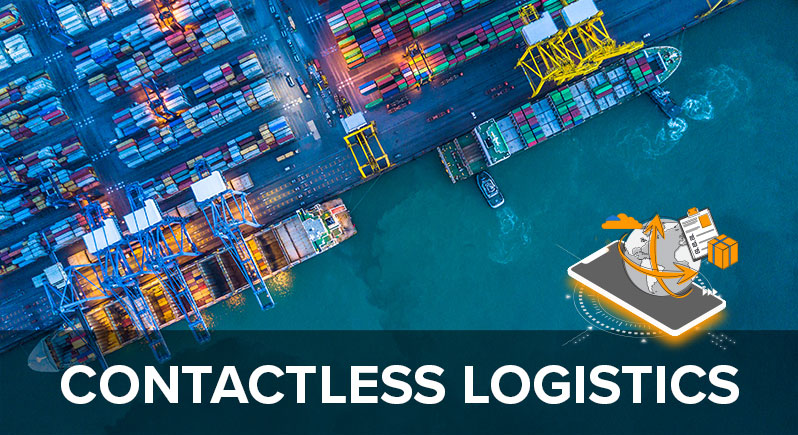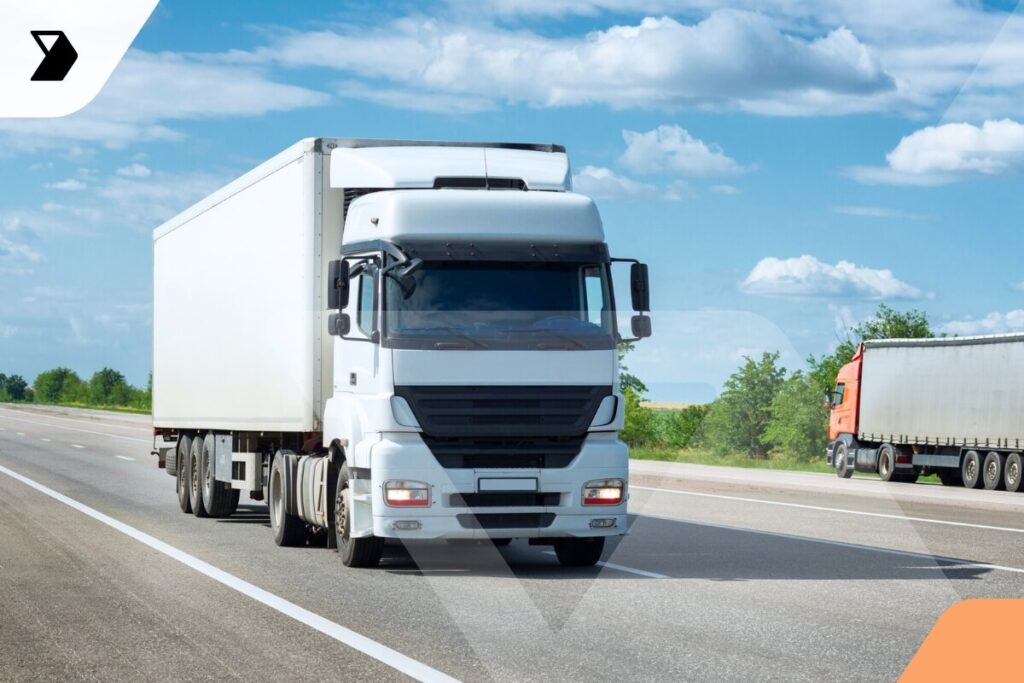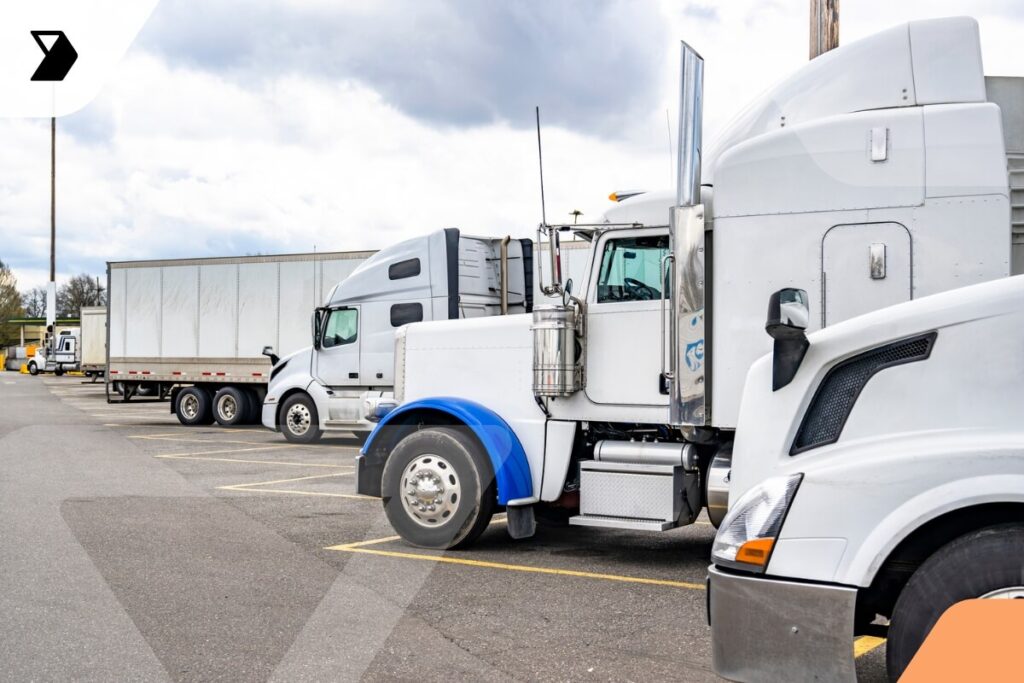Logistics Apps: The Only List You Need to Find the Right One
Logistics is an industry with nearly countless pieces to it. From customers to brokers to bills of lading to drivers to equipment and more, there's a lot to keep track of.
Ready to transform your supply chain?

Fortunately, mobile apps have become the soupe du jour in logistics. As such, you’ll find a plethora of digital help available.
August 20, 2020

The goal of this post, then, is to help you decide exactly what app you need. I’ll accomplish this in a couple of ways.
First, I’ll go over your potential needs and services to have in an app. Then, I’ll list a few of the apps and help determine which is best for you and your business.
Potential App Needs
Okay! So, let’s look at what your needs in a logistics app might possibly be.
- GPS Tracking: Keep tabs on where your trucks are at all times.
- Fuel Tracking: Evaluate average fuel consumption and find the cheapest places to stop for refueling.
- Barcode Scanning: The ability to scan barcodes or capture QR codes.
- Map Direction and Routing: This helps you find truck-friendly routes.
- E-Logs: These are a way to keep your driver’s logbook easy to manage and viewable for dispatch.
- Mobile Capture: You can digitally capture documents and signatures.
- Appointment Booking: This is for shippers, customers, and carriers alike.
- Delivery and Read Receipts: With this, you can track whether emails have been read and received.
- Billing and Invoicing: Minimize paper and file electronically to pay and be paid faster.
- TMS Integration: Sync with your transportation management system for faster processes all around.
In addition to all these needs, you need to know what comes next. Specifically, you need to know what you need. When it comes to the needs of your company, many apps are not one-size-fits-all. Therefore, I’ll go through a handful of apps that are out there and describe what they do.
Logistic App Options
Below, I’ll describe a few of the popular apps among logistics professionals. Some of these are more valuable for shippers and clients, while others are more valuable for carriers. Still others are more directed at drivers. There are a lot of options to choose from. Let’s dive in.
Booksy
First up, we have Booksy. This is a straight-up appointment scheduling app. While not specific to logistics, this app is a tremendous help for shippers and clients in the supply chain. For example, carriers can jump in and book their own time slots for pickup and delivery appointments through the app. Furthermore, there’s a direct line of communication to the client available through the app as well.
While it’s not the most robust offering, there’s a lot of supply chain value in Booksy.
DriveWyze
DriveWyze is a very driver-friendly app that’s designed to help avoid weigh stations and roadside inspections. Also, the app can provide inspection alerts to drivers. Simply knowing when and where to expect to run into these stations and inspections can be a great way improve CSA scores.
GasBuddy
This is another app very popular with drivers. GasBuddy is free and gives drivers access to diesel prices at fueling stations all over the country. Not only does this help save fuel costs, but it also helps drivers plan their routes. The app shows the locations of nearby fueling stations. Not only that, it allows drivers to see specific features that each station offers.
CoPilot Truck Navigation
This app is a fantastic option for drivers and dispatch alike. CoPilot offers trucker-specific navigation on your route. For example, the app points out low bridges and truck-restricted roads. Also included is full route planning from stop to stop to help use the least amount of fuel and waste the least amount of time possible. This should help increase on-time deliveries as well. Furthermore, CoPilot offers real-time traffic updates, which should help in providing more accurate ETAs. Finally, this app also offers offline navigation as well.
BigRoad
BigRoad is a very popular app that specializes in handling driver logbooks. Drivers can easily maintain their e-logs with this app, which means they can avoid hours of service violations. Another feature is the ability to create driver vehicle inspection reports on the fly. Lastly, drivers may also send notifications to fleet managers of maintenance needs.
Cost Per Mile
Of all the options, this one probably has the most on-the-nose name. This app does exactly what you’d expect. Cost Per Mile will calculate all business expenses to evaluate how much you’re spending per mile so you can ensure you always churn a profit. Most commonly, this app is popular with newer owner-operators who are still getting acclimated with how to be successful on their own.
Scandit
Scandit is the app above all other apps when it comes barcode and QR code scanning. While several apps may include scanning as an additional feature, Scandit makes this its sole focus. The benefit here is that this scanner has none of the typical sensitivity you’d associate with a digital scanner. Even if what you’re scanning is off center or out of focus, this scanner will pick up codes from nearly any angle.
Vector
Vector is the most comprehensive solution on this list. There are a number of features Vector brings to the table. I’ll lay them out in detail below.
Mobile Capture
- Vector’s mobile capture program is extremely versatile. Beyond clear mobile scans and screen grabs, proof of delivery documents are uploaded and accessible from anywhere through the dashboard portal. Additionally, they include GPS tagging, auto-routing, and an offline mode.
- Vector is built to integrate with a variety of software for the sake of documentation integration. Better yet, they do all the hard parts for you.
- With its digital filing system, Vector organizes virtual documents by reference number and document type. These also include information on who uploaded documents, when, and where.
- Lastly, Vector has a search function for all documentation it gets from mobile capture.
Imaging and Billing
Vector also incorporates seamless TMS integration. As such, no keyboard entry is necessary. Information like load numbers is pre-filled for drivers. Perhaps the most driver-friendly option is there’s no guesswork. Vector will prompt the driver on which documents to upload for which customer. The imaging and billing program also provides the option for delivery receipts and read receipts for email.
Finally, consolidated invoicing significantly cuts down paperwork and turnaround time from delivery to customer.
Workflows
Vector is all about simplifying workflow. Drivers can track everything from inspections to shortages to accidents to detention and referrals—all in one place. Additionally, Vector allows for customized forms and workflows. You can get everything you need, tailored to the way you want it.
Keeping Track While Keeping Things Simple
There are so many pieces to the logistics puzzle. Keeping track of them all is extremely difficult. Apps are here to help simplify as much of your business as possible. I’ve shown in this list how diverse the options are…not only in availability, but also in offered features. You may need more than one app to fully optimize your business.
That said, clearly Vector is the most complete and comprehensive option available. It checks more boxes off the list than any other. Further yet, in the very challenging and uncertain times that come with the COVID-19 pandemic, Vector specializes in contactless pickup and delivery options. The company has created an integrated system that goes beyond digital BOLs. Drivers can check in, auto-receive documents, and check out. All of this is contactless, which makes it as safe as possible.
Only you can decide what’s right for you and your business. I strongly recommend examining your needs before making your choice, and determining what best works for you.
This post was written by Matthew Zandstra. Matt has been working in transportation and logistics dispatch for the past six years, both as a broker and direct to drivers. He’s familiar with various facets of relationships, technical systems, pricing mechanics, and commodities.
Continue reading
Ready to transform your supply chain?
Increase efficiency and productivity. Say goodbye to delays, handwriting errors, and time-intensive manual data entry.



